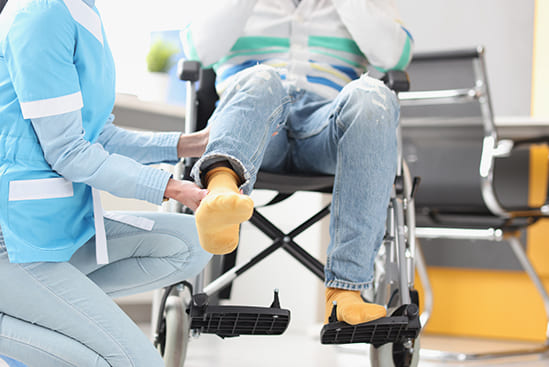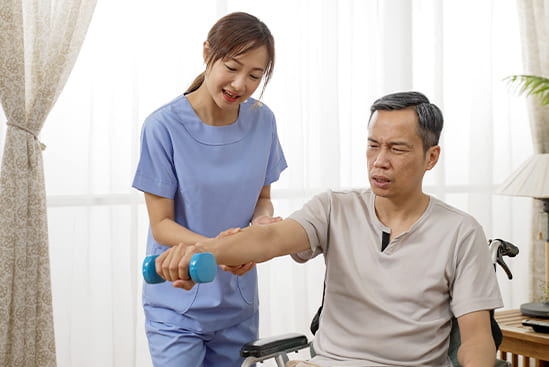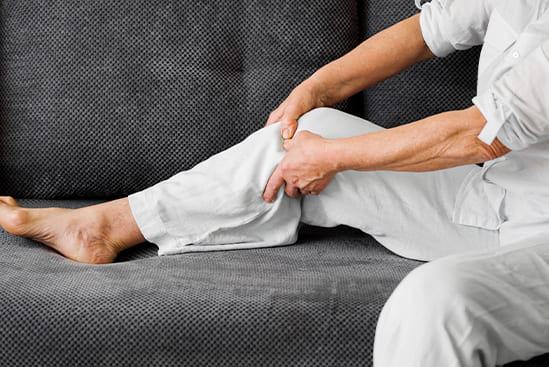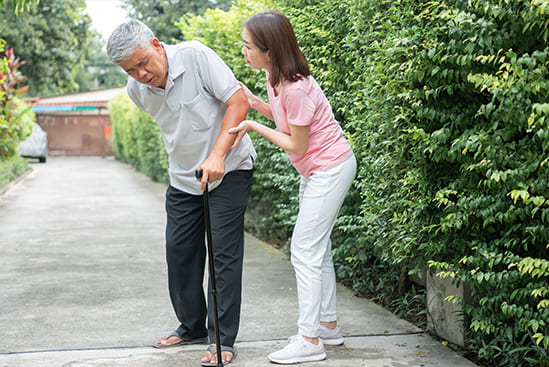
Scoliosis & Postural Abnormalities
Scoliosis Physiotherapy for Teenagers: What You Should Know
Scoliosis is a common condition that affects the spine, causing it to curve sideways. While scoliosis can develop at any age, it’s particularly prevalent in teenagers during their growth spurt. Early detection and proper management are crucial to prevent the condition from worsening, and physiotherapy plays a key role in treatment.
What is Scoliosis?
Scoliosis is an abnormal curvature of the spine that typically occurs in childhood or adolescence. Unlike the natural curves found in the cervical, thoracic, and lumbar regions of the spine, which are essential for shock absorption and proper alignment, scoliosis involves a lateral (side-to-side) curve, primarily in the coronal (front) plane.
While the curvature is measured in the coronal plane, scoliosis is a three-dimensional condition that also affects the sagittal (side) and axial (horizontal) planes. This complex deformity includes vertebral rotation, changes in the rib cage, and sometimes hypokyphosis (a decrease in the normal curve of the thoracic spine).
As the condition progresses, the spine’s curvature may lead to additional rotation and spinal twisting, a phenomenon known as torsion-scoliosis. This results in visible deformities, such as a rib hump, and can affect overall posture and movement. Scoliosis is typically defined by the Cobb’s angle, a measurement that helps assess the degree of the spine’s curvature.
Symptoms of Scoliosis in Teenagers
Teenagers with scoliosis may exhibit several noticeable symptoms, such as uneven shoulder height, an asymmetrical waistline, and rib prominence when bending forward. Changes in posture are also common, with some individuals leaning to one side or appearing to slouch. Additionally, differences in hip alignment can be observed. As the curvature progresses, mild to moderate back pain may develop, particularly after long periods of sitting or standing, leading to discomfort and fatigue. In more severe cases, if the curvature affects the chest area, breathing difficulties may occur, though this is less common.
Diagnosis of Scoliosis in Children and Teenagers
Scoliosis is often diagnosed in children and teenagers during routine medical check-ups, as many early cases show no noticeable symptoms. Chiropractors and medical professionals take a comprehensive approach to diagnosis, starting with a detailed review of the child’s medical history and family background. This helps identify any underlying health conditions that may contribute to spinal curvature. In some cases, scoliosis may even be detected through school screenings.
Next, a physical examination is performed to assess posture and check for any signs of asymmetry in the trunk, shoulders, or hips. When the child bends forward, the doctor looks for signs such as uneven rib cages, which could indicate scoliosis. Although physical exams are crucial, the most accurate diagnostic method is an x-ray. X-rays provide a clear picture of the spine, allowing doctors to assess the degree of curvature and determine its severity. This detailed imaging helps healthcare providers create personalized treatment plans based on the unique needs of the patient, ensuring the most effective care and management strategies.
How Physiotherapy Helps in Managing Scoliosis
Physiotherapy for scoliosis is a non-invasive treatment that focuses on improving posture, strengthening the muscles around the spine, and increasing flexibility. It can help slow the progression of scoliosis, reduce pain, and improve overall function.
Key Physiotherapy Techniques for Scoliosis:
- Postural Exercises: These exercises help improve posture, which can alleviate pressure on the spine and prevent further curvature.
- Strengthening Exercises: Targeted strengthening exercises help build the muscles around the spine, providing better support and stability.
- Stretching: Stretching can increase spinal flexibility and help relieve muscle tightness caused by scoliosis.
- Breathing Exercises: Certain breathing techniques help expand the lungs and improve posture, particularly in cases where the curvature affects lung function.
- Scoliosis-Specific Exercises: These exercises, often based on methods like the Schroth method or SEAS (Scientific Exercise Approach to Scoliosis), are specifically designed to treat scoliosis and improve spinal alignment.
The Importance of Early Intervention
Early intervention is essential in managing scoliosis in teenagers. Physiotherapy can help prevent the curve from worsening, potentially avoiding the need for more aggressive treatments such as bracing or surgery. The earlier scoliosis is identified, the more effective physiotherapy can be in minimizing its impact on the teen’s quality of life.
Complications of Late Treatment for Scoliosis
If scoliosis is left untreated or diagnosed too late, it can lead to several serious complications that may significantly impact a teenager’s health and quality of life. One of the primary risks is the progression of the spinal curve, which can worsen over time, causing increased pain and discomfort. As the curvature deepens, it can affect posture, making it more difficult to stand or walk comfortably.
Severe cases of untreated scoliosis can lead to physical deformities, including a visible rib hump or uneven shoulders and hips. In extreme cases, the spine may continue to curve to the point where it begins to compress internal organs, such as the lungs and heart. This compression can lead to breathing difficulties, reduced lung capacity, and cardiovascular problems.
Furthermore, untreated scoliosis may result in chronic back pain, particularly as the spine and muscles compensate for the abnormal curvature. This pain can worsen over time, impacting daily activities and leading to fatigue, weakness, and decreased mobility. In some cases, advanced scoliosis may require more aggressive treatments, such as bracing or surgery, which could have been avoidable with earlier intervention.
Overall, late treatment for scoliosis can significantly affect both physical health and emotional well-being, making early detection and management critical to preventing long-term complications.
When to Seek Professional Help
If you notice any of the signs of scoliosis in your teenager, it’s crucial to consult a healthcare professional. An orthopedic specialist or physiotherapist will evaluate the severity of the curvature and create a personalized treatment plan.
The Benefits of Scoliosis Physiotherapy for Teenagers
- Pain Relief: Reduces discomfort by addressing muscle imbalances.
- Prevention of Curve Progression: Helps maintain the spinal curvature at a manageable level.
- Improved Posture: Corrects posture to avoid long-term complications.
- Increased Mobility: Improves flexibility and the overall range of motion.
- Non-Invasive: Provides a safe, drug-free option for scoliosis management.
Conclusion
Scoliosis can have a significant impact on a teenager’s physical health, posture, and overall well-being if left untreated. Early detection and treatment are essential in managing the condition and preventing complications like chronic pain, reduced mobility, and potential damage to internal organs. Physiotherapy plays a vital role in managing scoliosis, offering non-invasive treatments to improve posture, strengthen muscles, and enhance spinal flexibility.
At Synapse Physiotherapy, we specialize in providing personalized treatment plans for scoliosis patients, focusing on tailored exercises, postural correction, and strengthening techniques to help manage and reduce the progression of the condition. Our expert team works closely with patients to develop a comprehensive approach to scoliosis care, aiming to improve function, alleviate discomfort, and prevent long-term complications.
If you or your teenager have been diagnosed with scoliosis, it’s important to seek professional advice as early as possible. With the right treatment and support, scoliosis can be effectively managed, ensuring a healthier, more active lifestyle. Contact Synapse Physiotherapy to learn more about how we can assist in managing scoliosis and improving quality of life.
Can Physiotherapy Help Prevent a Slip Disc from Recurring?
A slipped disc, also known as a herniated or prolapsed disc, can cause debilitating pain and discomfort. This condition occurs when the soft inner material of a spinal disc protrudes through its outer layer, often leading to nerve compression, inflammation, and mobility issues. While treatments such as medication, rest, and surgery may provide relief, physiotherapy for slip discs plays a crucial role in both recovery and prevention of recurring episodes. But can physiotherapy truly help prevent a slipped disc from recurring? The answer is a resounding yes. Let’s explore how.
Causes and risk factors of slip disc
It’s essential to understand the common causes of a slipped disc. Some of the most prevalent risk factors include:
- Poor posture: Prolonged sitting, incorrect lifting techniques, and awkward sleeping positions can strain the spine.
- Aging and degeneration: As people age, spinal discs lose their elasticity and hydration, making them more susceptible to herniation. This natural wear and tear, known as disc degeneration, can make the discs more prone to rupturing, even with minor strains or movements.
- Sedentary lifestyle: Lack of physical activity weakens core muscles that support the spine.
- Excess body weight: Carrying extra weight increases the stress on spinal discs, especially in the lower back.
- Repetitive movements and occupational strain: Jobs that require frequent bending, lifting, twisting, or prolonged sitting can put excessive pressure on the spine, leading to a higher risk of disc issues.
- Genetic predisposition: Some individuals inherit a tendency to develop herniated discs due to genetic factors.
- Smoking: Reduced oxygen supply to spinal discs due to smoking can accelerate disc deterioration.
- Frequent driving: Long periods of sitting combined with vehicle vibrations can increase spinal stress.
By addressing these factors, physiotherapy can play a critical role in preventing future slipped discs.
Symptoms of a Slipped Disc
The symptoms of a slipped disc vary depending on its severity. If only a small portion of the disc bulges out, there may be minimal or no symptoms. However, more severe cases can lead to a condition known as sciatica, which occurs when the protruding disc compresses the sciatic nerve.
Symptoms of a slipped disc include:
- Lower back pain: Persistent or sharp pain in the lower back.
- Numbness or tingling: Sensations of pins and needles, particularly in the legs and feet.
- Sciatica: Pain that radiates from the lower back down through the buttocks and legs.
- Muscle weakness: Weakness in muscles supplied by affected nerves.
- Balance problems and falls: Difficulty maintaining stability when standing or walking.
- Spasms: Muscle tightness and involuntary contractions in the affected area.
How Physiotherapy Helps Prevent a Recurring Slipped Disc
Physiotherapy focuses on strengthening the muscles surrounding the spine, improving posture, and increasing flexibility, all of which help reduce the risk of a recurrent slipped disc. Here are some ways physiotherapy helps:
1. Strengthening Core Muscles
A strong core provides better spinal support and stability, reducing the strain on the discs. Physiotherapists design specific exercises to strengthen the deep abdominal and back muscles, helping distribute the body’s weight more evenly and minimizing stress on the lower spine.
2. Improving Posture
Poor posture is one of the leading contributors to spinal disc problems. Physiotherapists educate patients on proper sitting, standing, and sleeping postures to minimize spinal stress. They may also recommend ergonomic adjustments for workstations, ensuring that the spine remains in a neutral position throughout the day.
3. Enhancing Flexibility and Mobility
Tight muscles can exert pressure on the spine, increasing the risk of disc herniation. Physiotherapy includes stretching exercises that improve flexibility and relieve tension in the lower back, hamstrings, and hip flexors, promoting better spinal health.
4. Encouraging Safe Movement Techniques
Physiotherapists teach patients safe techniques for bending, lifting, and carrying objects to prevent unnecessary strain on the spine. Learning how to engage the correct muscles and distribute weight evenly can significantly reduce the risk of re-injury.
5. Pain Management and Inflammation Reduction
Even after initial recovery, some individuals experience residual pain and inflammation. Physiotherapy incorporates techniques such as manual therapy, massage, and heat/cold therapy to alleviate discomfort and improve blood circulation, which aids healing and prevents stiffness.
6. Promoting a Healthy Lifestyle
Physiotherapists often provide guidance on weight management, diet, and lifestyle modifications. Maintaining a healthy weight and engaging in regular, low-impact activities like swimming, walking, or yoga can significantly reduce the strain on the spine and lower the chances of a recurrence.
7. Customizing a Long-Term Exercise Plan
Consistency is key to preventing a slipped disc from recurring. A physiotherapist can develop a personalized exercise plan tailored to the individual’s specific needs, ensuring that they maintain spinal health long after initial treatment ends.
Physiotherapy vs. Surgery: Which is Better for Prevention?
Many individuals suffering from a slipped disc wonder whether surgery is a better option for preventing recurrence. While surgery can provide relief in severe cases, it does not address the underlying causes, such as weak muscles and poor posture. Physiotherapy, on the other hand, tackles these root issues, making it an effective long-term preventive strategy. Research suggests that most individuals with a slipped disc can recover and prevent recurrence through conservative treatments like physiotherapy, rather than opting for surgery.
When to See a Physiotherapist
It is advisable to see a physiotherapist if you have:
- Experienced a slipped disc in the past and want to prevent another episode.
- Recurring back pain, stiffness, or weakness in the lower back or legs.
- Poor posture or a sedentary lifestyle that puts you at risk of spinal issues.
- Difficulty performing daily activities due to back pain.
Seeking early intervention from a physiotherapist can make a significant difference in spinal health and overall well-being.
Conclusion
Physiotherapy is a powerful tool in preventing the recurrence of a slipped disc. By focusing on strengthening the core, improving posture, increasing flexibility, and teaching proper movement techniques, physiotherapy helps individuals maintain a healthy spine and minimize future risks. Rather than waiting for back pain to return, incorporating physiotherapy into your routine can lead to long-term relief and a better quality of life. If you’ve experienced a slipped disc before or are at risk, consulting a physiotherapist is a proactive step toward ensuring spinal health and preventing future injuries. Synapse Physiotherapy offers expert physiotherapy treatments tailored to help you recover from and prevent slipped disc recurrences. Their specialized approach ensures optimal spinal health, mobility, and overall well-being.
Tags :

Back & Neck Pain
Conditions such as stiffness, postural abnormalities and muscle overuse from prolonged desk work at the office or home is more prevalent than most would think. We provide the necessary tools to fix you up and educate you on ergonomics which can unload unnecessary stress.
- Spine & Core Rehabilitation
- Strength & Conditioning Programme
- Pain Management
- Biomechanical Assessment
- Sports Physiotherapy
- Group Class

Sports Injuries
Rolled ankles, jarred knees, impinged shoulders are few conditions in the plethora of sports injuries which can hamper performance and limit our enjoyment of sports. Physiotherapy not only treats the symptoms of these conditions but propels your overall fitness to greater heights.
- Strength & Conditioning Programme
- Pain Management
- Biomechanical Assessment
- Sports Physiotherapy
- Shockwave Therapy
- Group Class

Work Desk Injuries
Conditions such as stiffness, postural abnormalities and muscle overuse from prolonged desk work at the office or home is more prevalent than most would think. We provide the necessary tools to fix you up and educate you on ergonomics which can unload unnecessary stress.

Pre-Post-Surgical Conditions
Surgery involves going through preparation both before and after. Physiotherapists play a vital role in getting your body ready for surgeries with circulatory, breathing and strengthening exercises. After the procedure, let us be there for your recovery and rehabilitation, taking it one step at a time.

Scoliosis & Postural Abnormalities
The way we stand, sit, walk and sleep has influence over our posture and the overall balance of muscles controlling its alignment. A comprehensive screening can be done by our physiotherapists to detect abnormalities, which we will aid in correcting.

Neurological Conditions
Neurological disabilities such as stroke, nerve compression and neuropathies can be barriers for patients to live life to its fullest. We at Synapse are committed to help you overcome these hurdles by ensuring functional mobility and quality of life is at its optimum by providing the right treatment and exercises.

Osteoarthritis & Rheumatism
Joint degeneration and inflammation happens as the human body grows older, but that does not mean our way of life degenerates as well. Relief your joint pains with a joint effort together with your physiotherapist, who will provide pain-relief treatments and prescribe exercises for your wellbeing.

Conditions Relating To Elderly
Common conditions in the older age population include hips & knee pain, back & neck pain, osteoarthritis, rheumatism, fear of falling and many more. Aging and degeneration of bodily function is inevitable, but here at Synapse, we will help you live the best of your life.

Home Physiotherapy
We understand that some conditions or injuries can make it difficult to receive rehabilitation at our clinic be it mobility or transportation issues. Our objective is to provide you with the same high-quality physiotherapy services at home that you would receive in-clinic.
